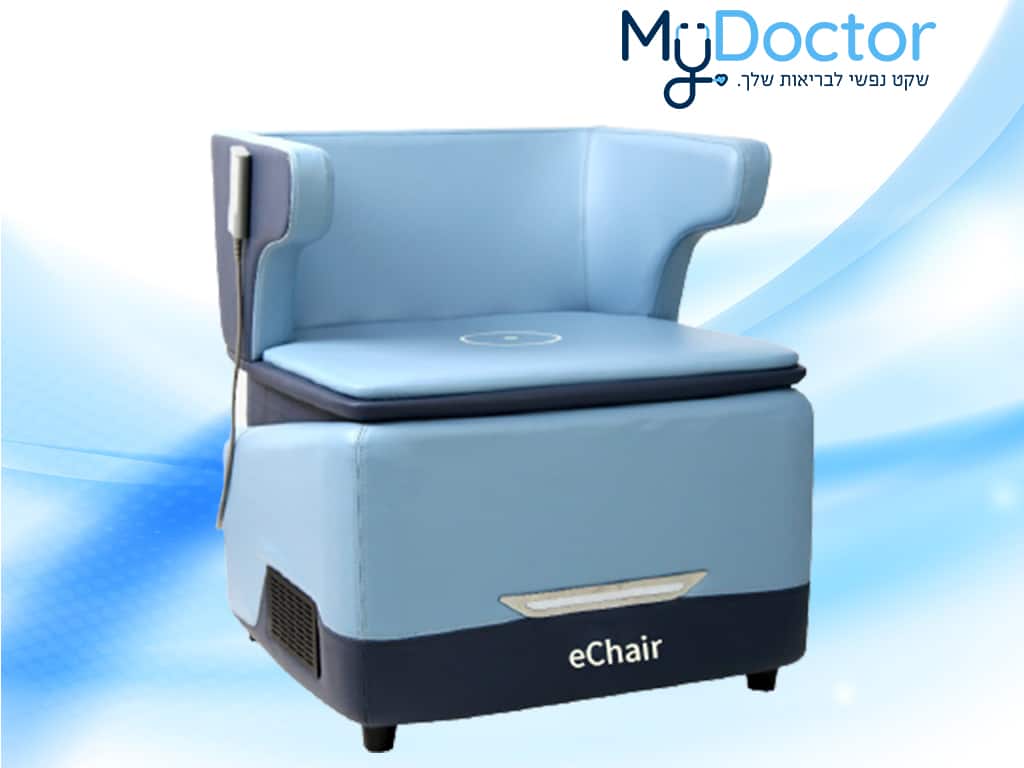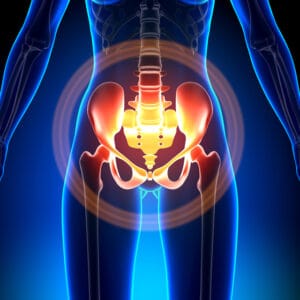Do you need pelvic floor rehabilitation?
We have a revolutionary and non-invasive solution that will change your life!
A combined treatment of a revolutionary electromagnetic chair that trains and strengthens the pelvic floor muscles + the close accompaniment of a pelvic floor physiotherapist that will save you long months of grueling treatments, in just 6 sessions!
The service is provided at the Pelvic Floor Treatment Center, Tel Hashomer Ramat Gan, 4 Gildsgame St., Kfar Safa, 6 Hassadna St., and in Haifa, 251 Histadrut Blvd.
A pelvic floor physiotherapist will accompany you throughout the series of treatments
The treatment is non-invasive and takes place fully clothed
The treatment is recognized by Clalit Perfect/insurance companies and they provide reimbursements according to your policy. We will accompany you in receiving the refunds to which you are entitled


היום תורך לשנות את חייך! פגישת ייעוץ מקצועית + טיפול ניסיון עם הרבה ערך For only 149 ₪!

Our Team
Dr. Gandhi Bittman

Specialist in General Gynecology, Urgynecology and Pelvic Floor
Dr. Bittman has been an expert in gynecology and urogynecology at Sheba for over 20 years. Performs fistula repair surgeries (the only one in the center of the country that does this using the vaginal method), gynecological surgeries using endoscopic methods (laparoscopy and hysteroscopy), innovative laparoscopic surgeries to correct pelvic organ prolapse, and surgeries to correct urinary leakage.
Our Physiotherapists

Dr. Dana Poudel - Pelvic Floor Physiotherapist
Dr. Dana Poudel is a PhD specialist in physical therapy from Northwestern University Chicago, USA.
Dana has extensive experience in treating pelvic floor problems in women and men, and even combines yoga exercises in the clinic as a holistic treatment for a variety of problems.

Yifat Goldberg - Physiotherapist for pelvic floor rehabilitation
Holds a bachelor's degree in BPT physiotherapy,
She has clinical experience in treating a variety of pelvic floor problems in women and men, orthopedic and vestibular rehabilitation.

Meirav Melamed - Physiotherapist for pelvic floor rehabilitation and orthopedic rehabilitation
Holds a bachelor's degree from Tel Aviv University (BPT). With extensive clinical experience, athlete rehabilitation, pelvic floor treatment, spinal injuries and more.
How does it work?

1. Schedule a consultation and adjustment meeting, which includes a medical examination by a physiotherapist specializing in pelvic floor + experiential treatment

2. If you are suitable, schedule a series of treatments using the eChair

3. Embark on a new path with strong pelvic floor muscles that prevent annoying urine odors

4. We will accompany you in receiving reimbursements from your health plan / insurance company
Pelvic floor rehabilitation
The pelvic floor is an integral part of each and every one of your body, and it plays a central role when it comes to controlling the sphincters and the activity of the bladder. Many women, as well as many men, suffer from functional impairments of the pelvic floor muscles, and therefore they suffer from a variety of problems and pain – from urinary incontinence, through pain during sexual intercourse, to difficulty in passing stool or urine. Since this is such a complicated situation, there is no doubt that pelvic floor rehabilitation is something that these people should take into account, and not give up. If you also suffer from problems that are reminiscent of those mentioned here, pelvic floor rehabilitation can be relevant to you as well, and that's exactly why we've prepared some important information for you. We invite you to join us on an in-depth journey to get to know some of the most important topics in your life – pelvic floor muscles, urinary incontinence, Kegel exercises and contractions, as well as one device that is going to change your daily life for the better very quickly and in the long term.

Pelvic Floor Rehabilitation – Introduction
When we talk about pelvic floor rehabilitation, we are talking about a set of actions that can restore the condition to normal, strengthen the pelvic floor muscles, and give you back control of your sphincters. Pelvic floor reconstruction is intended for both men and women, and it is the one under which there are a variety of treatments, exercises and actions that must be performed in order to control the condition.
So what is actually going on there?
To begin with, we should touch on the reasons and motives for which the need for pelvic floor rehabilitation may arise. The rehabilitation stage will come, of course, after the problem of loosening of the pelvic floor muscles has arisen. This deterioration and deterioration can occur in a variety of different situations, including childbirth, old age, problematic medical background, and other conditions that we will discuss in more depth below.
The result of the loosening and weakening of the pelvic floor muscles is a result that spans a number of areas, and is expressed in difficulty urinating and sometimes also in stool, urinary incontinence in a variety of situations, pain during sexual intercourse, etc. Since this result dominates on so many levels, some of which accompany your daily life, there is no doubt that a solution must be found. Pelvic floor restoration is what stands in line with this solution.
More on the motives and circumstances for pelvic floor reconstruction
As mentioned, there are quite a few conditions that may cause the pelvic floor muscles to loosen and consequently also the need to rehabilitate the pelvic floor, and now it's time to elaborate on them in a little more depth:
1. Age
Women and men at older ages may suffer from a significant weakening of the pelvic floor muscles, and as a result, of course, they have to deal with the variety of problems that accompany it. In terms of percentages, it is possible to distinguish between 10% and 20% of the male population aged 65 and over who suffer from urinary incontinence, and if we look at the female population, we will find that about 30% of them suffer from the problem at all ages.
2. Medical background
Various diseases can cause weakening of the pelvic floor muscles. Diseases such as Alzheimer's, Parkinson's or diabetes, for example, are diseases that have an impact on the cognitive level in the body, and therefore this may also be reflected in the weakening of the pelvic floor muscles and the appearance of urinary incontinence.
3. Unexpected events in life
Both women and men may encounter a variety of unexpected cases, such as a car accident, stroke or stroke, and more. These cases can harm the human body and, accordingly, lead to weakening of the pelvic floor muscles. Of course, this condition does not depend on age or any other factor.
4. Excess weight and the connection to the pelvic floor muscles
Urinary incontinence is due to the weakening of the pelvic floor muscles, and excess weight also plays an important role in this matter. Women and men who are overweight may suffer from urinary incontinence in a much more significant and daily way than other people, because the excess weight creates pressure on the bladder, opposes the activity of the pelvic floor muscles that try to control the sphincters, and leads to the urinary incontinence in question.
5. Taking various medications can also cause the pelvic floor muscles to weaken
The need to rehabilitate the pelvic floor can arise due to the weakening of the muscles created by taking various medications, which contain chemical substances that have an effect on the body.
Pelvic floor rehabilitation after childbirth
Another and no less important point that characterizes only the female population is the rehabilitation of the pelvic floor after childbirth. The act of childbirth is an act that causes all the muscles of a woman's body to exert, especially the muscles in the pelvic floor area, the muscles of the buttocks, the muscles of the thighs, and more.
The act of childbirth can be easier or less, but in any case, even the easiest of them, it requires a lot of mobilization and effort on the part of the pelvic floor muscles. Even throughout the pregnancy, which lasts for a full 9 months, the pelvic floor muscles work intensively, and sometimes weaken due to the great pressure exerted on them from the uterine area. Therefore, urinary incontinence is characteristic of both pregnancy and postpartum situations.
Types of urinary incontinence worth knowing
If we take a specific look at urinary incontinence conditions that require pelvic floor rehabilitation, we will find that there are two main types of urinary incontinence:
- Stress incontinence – Even if you are not aware of it, your body is working very hard in your daily life. This effort doesn't have to be sublime, and it's enough that you take a brisk walk, run, skip, sneeze or laugh – and your body is already working harder than at rest. This effort can cause urinary incontinence, because the control of the sphincters loosens around the exertion in question, and accordingly the urine can escape easily.
- Urinary incontinence – You have probably encountered a situation where you feel like you have to evacuate, and just before you go to the toilet to do so – your urine is already starting to escape. This sense of urgency can also lead to urinary incontinence, and there is no doubt that pelvic floor rehabilitation plays an important role in this situation as well.
Why is pelvic floor rehabilitation so important?
Some of you are probably wondering why pelvic floor rehabilitation is so important, and why we insist on clarifying the level of criticality of the matter throughout what is written here. Well, pelvic floor rehabilitation plays a super significant role in restoring your routine to a normal and healthy state, and without it, you may be dealing with very unpleasant phenomena – both emotionally and mentally and in the physical and necessary sense.
The Impact of Urinary Incontinence on the Physical Meaning of Your Life
If you're dealing with urinary incontinence, you probably already know how to recognize the physical effects it brings. You find yourself becoming dependent on nearby toilet cubicles, carrying a changing brick bag with you wherever you go, and who knows – you may also be using a variety of different absorbent products to keep yourself from getting wet when you're out and about.
This is a situation that prevents you from being spontaneous, independent and liberated, and slowly this dependence becomes one that permeates your psyche as well. Hence, the deterioration may already be much more than just unpleasant, but also one that directly harms the soul.
The impact of urinary incontinence on the emotional and mental sense of your life
Maybe you are still somehow able to cope with the physical sense, and you know how to find the solutions that will make your life one that you can tolerate, but when you talk about the emotional and mental sense, you are already talking about a completely different topic. Coping with urinary incontinence can lead you very quickly to states of depression, sadness, frustration, despair, and especially great helplessness. All these feelings are completely understandable, after all, what person can be happy and happy when he is constantly thinking about the next urinary incontinence that will occur in his body?
Dealing with these complex mental states is very difficult to deal with, and their effects can be severe in both the short term and the long term. Therefore, pelvic floor rehabilitation can explicitly save you from this situation, and regain control of both the sphincters in particular and your life in general.
Don't worry – there's something you can do about it
Today, when we talk about pelvic floor rehabilitation, we are talking about a real solution. If until a few years ago pelvic floor rehabilitation was only expressed in independent exercises that you can perform and get results in a very long time, today we are talking about a whole world of advanced, technological and super effective options.
Before we tell you about all the possible ways for you to rehabilitate your pelvic floor, you should understand that today you really don't have to accept the situation as it is and give up, on the contrary – the sooner you rehabilitate your pelvic floor, the sooner you can get results and regain the healthy routine you love so much.
How is pelvic floor rehabilitation expressed?
Let's start by talking about exercises to rehabilitate the pelvic floor. These exercises have been with humanity for decades, and they are designed to strengthen the muscles in the state of Pelvic floor dysfunction and help them control your sphincters. These exercises can be performed from anywhere and at any time, and there is no need to prepare with special equipment to perform them correctly.
It is important to note that these exercises can also be used in the framework of pelvic floor rehabilitation, but it is possible and even recommended and worthwhile to perform them even before the appearance of the problem of urinary incontinence, and even when the pelvic floor muscles are strong enough. The exercises will help maintain the current situation, and thus you will be able to prevent yourself from dealing with urinary incontinence in the future.
Pelvic floor rehabilitation: six exercises to perform independently
In order for you to start practicing, we have compiled here six different exercises for pelvic floor rehabilitation. At the center of each and every one of these exercises is a clear principle – to contract and relax the pelvic floor muscles, to achieve a large amount of Kegel contractions – contractions of the pelvic floor muscles, and accordingly to strengthen them. In order to perform them, it is recommended to have a mattress or towel, a chair and comfortable clothes. Each of the exercises is recommended and should be performed in a framework of between two and three sets, with each of them consisting of between 10-15 repetitions.
Exercise No. 1
It is performed in an eastern yeshiva. This exercise begins in a sitting position, while relaxing the muscles of the thighs as well as the muscles of the buttocks. From this position, the pelvic floor muscles must be contracted, so that your inner feeling should be that the muscles are rising upwards. After contraction, the muscles must be released again.
Exercise No. 2
It is performed while standing, so that both hands are close to the body and both legs are slightly apart. From this position, one leg should be swung upwards and bent, until the knee reaches the pelvic line. When the leg is raised, the pelvic floor muscles must be contracted, and when it is lowered back to the floor, they must be released. You can alternate between your legs and back and forth.
Exercise No. 3
It is an exercise that is performed in a cat stance, i.e. a six-point stance. Stand with your knees in a straight line below your waistline, and your palms in a straight line below your shoulders. From this position, the back should be arched while contracting the pelvic floor muscles, and then the back should be curved back while releasing them.
Exercise No. 4
In order to perform this exercise, sit so that the legs maintain a slight spread, and the hands support the entire body while resting behind the back. From this position, the buttocks and pelvis should be lifted upwards, while contracting the pelvic floor muscles. After reaching the climax, lower your buttocks and pelvis back onto the mattress while releasing the pelvic floor muscles.
Exercise No. 5
Also known as the elevator exercise, and if you practice classes like Pilates, you've probably already encountered it before. This exercise will require you to lie on a mattress with your legs slightly spread and your arms spread out to your sides. In this position, the pelvic floor muscles should be contracted – at first a little, then more, and finally a maximum contraction, followed by complete relaxation of the muscles. In fact, it should feel like going up the muscle elevator – to the first floor, then to the second floor, then to the third floor, and finally down to the ground floor again.
Exercise No. 6
Finally, this is an exercise that is done lying down, with the legs bent and close to each other, and the arms spread out to the sides. From the position of lying on the mattress, lift the buttocks and pelvis upwards, while at the same time contracting the pelvic floor muscles. The rise of the buttocks and pelvis should be slow and controlled, and after reaching the highest point, the buttocks and pelvis should be lowered downwards and the muscles should be released.
The effectiveness of exercises in pelvic floor rehabilitation – does it really work?
As we began to tell you earlier, there is no doubt that today, due to technological improvements and developments, these pelvic floor rehabilitation exercises are considered the least fast and effective method, but they can definitely help you strengthen the pelvic floor muscles before the appearance of urinary incontinence and muscle weakness. Of course, the exercises can also be performed in parallel with other pelvic floor rehabilitation, as an addition to the extra strengthening of the area.
What can work to rehabilitate the pelvic floor in a quick and effective way in the long term?
Today, there is no need to rely only on the above exercises, because the medical world is careful to produce more and more sophisticated and good solutions for pelvic floor rehabilitation. One of the most prominent solutions in the field today is the eChair, which is marketed by our company, MyDoctor, exclusively in the country.
This is a device that can do what thousands of exercises do in a much shorter time and with increased efficiency in the long term, so let's get to know it together.
Meet the Wonderful World of MyDoctor's eChair
We are proud to introduce you to our revolutionary electromagnetic chair, the eChair. The chair is built in the form of a very comfortable sofa for sitting, and to get its results, all you have to do is simply sit down. Yes, you read that correctly – don't lie down, don't stand, don't lift your legs, and don't contract and relax your muscles independently. The chair already takes care of everything, and all you have to do is sit, sit back, and go about your business.
At MyDoctor, we offer you a series of treatments consisting of six separate sessions. Each session will bring with it only 28 minutes of sitting in the chair, during which you will get a huge amount of Kegel contractions that will strengthen your pelvic floor muscles. How mighty? Well, we're talking about 11,000 Kegel contractions per treatment, so by the end of the series you'll end up with more than 65,000 Kegel contractions – a number that you've had to work for independently for many months.
Is pelvic floor restoration with the eChair really more effective?
So we are talking about such a large amount of Kegel contractions, but what is the meaning behind it? Well, there are several meanings here that are worth knowing:
- Much faster results and separation from urinary incontinence in a very short time.
- Strengthening the pelvic floor muscles intensely and clearly, so that the muscles can remain strong for very long months.
- The treatment is non-invasive and does not require you to insert objects into your intimate areas, unlike other pelvic floor restoration treatments.
- The treatment is done under the close supervision of a pelvic floor physiotherapist, from the first session until the end of the series of treatments.
Why MyDoctor?
It is very possible that you have already heard about similar treatments in the past, which have been offered to you by other companies. The difference between us and these companies is a simple difference – we at MyDoctor make sure to provide you with fast, professional and available service, in order to provide you with the right and appropriate response without having to waste precious time or wait for months for an appointment to be scheduled for you.
At MyDoctor, we operate a particularly large service system, with professional service representatives who know how to give you an answer to any question, remove any doubt from your heart, and tailor medical plans that will suit your exact needs. It's time Contact Us At the phone number 072-397-2-386 and coordinate with us the pelvic floor rehabilitation program that suits you like a glove. We are waiting for you, talk to us!
Want to get more information about pelvic floor rehabilitation?
Our team of experts will be happy to assist you

Fill in your details and we will get back to you as soon as possible!















